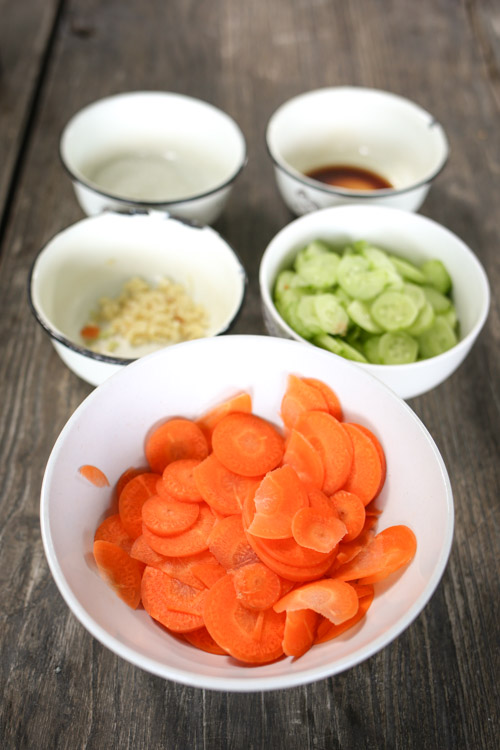
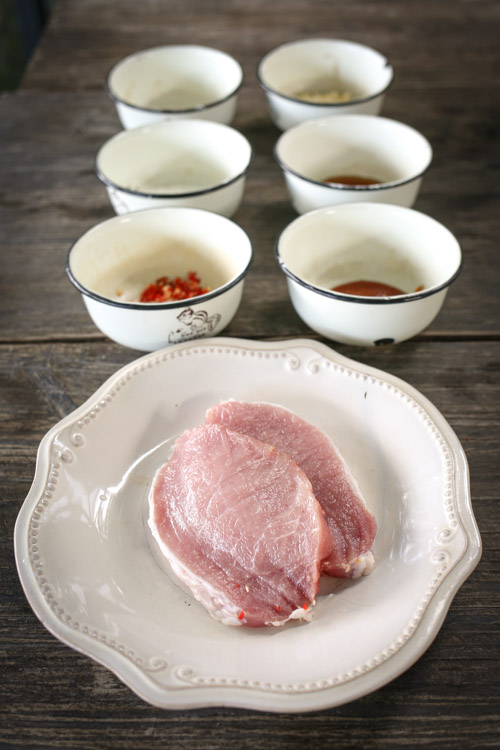
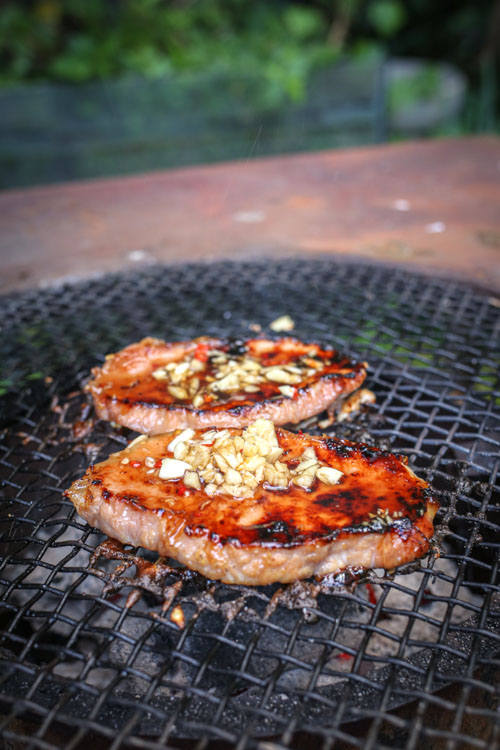
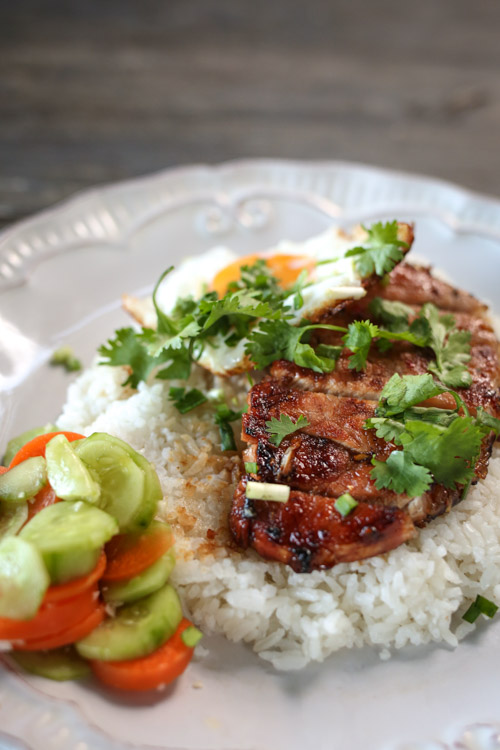
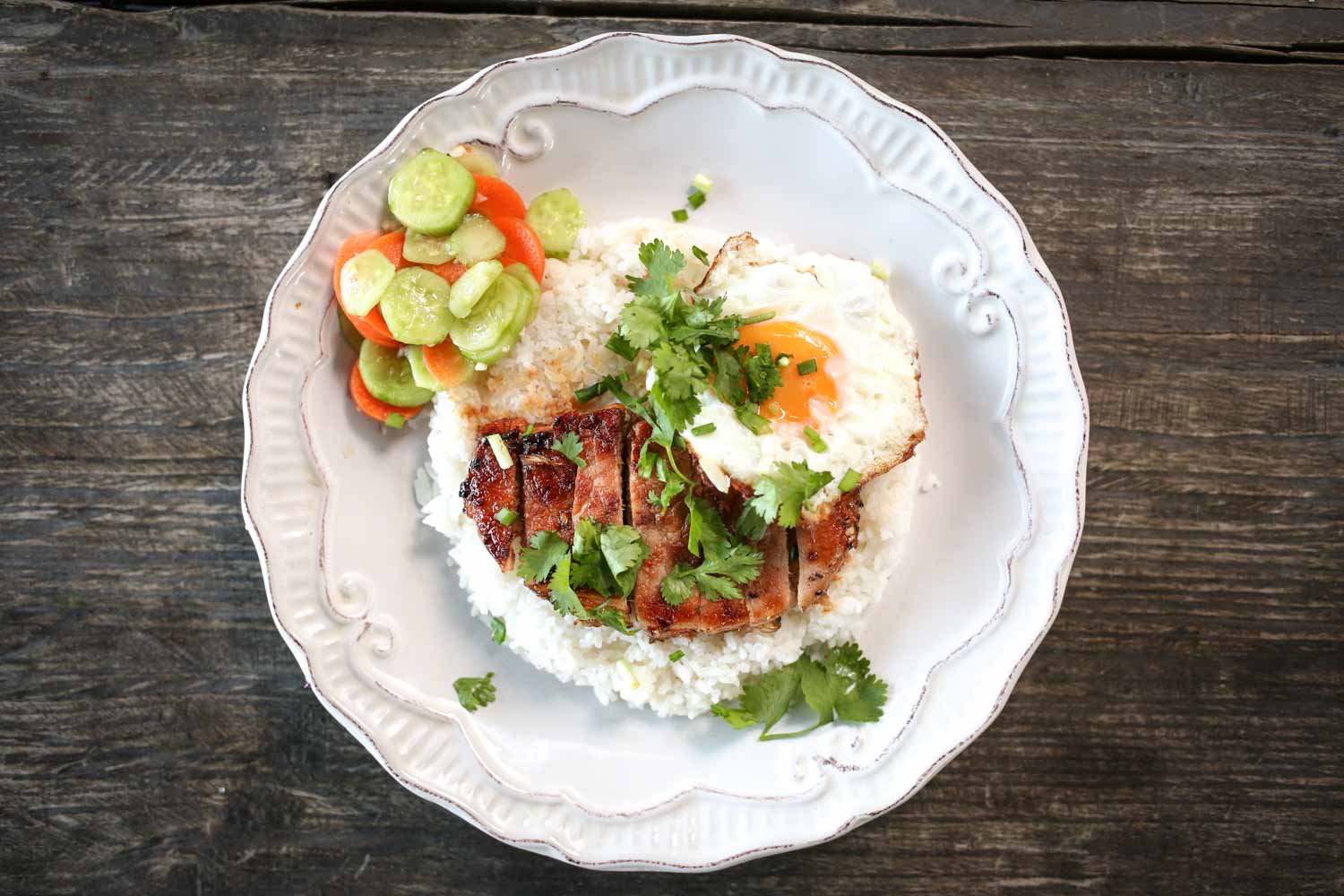
Pin it
Share it
The smell of fire-grilled pork is synonymous with sunrise in Phnom Penh and other newly urbanized areas of Cambodia. Over huge coal-filled oil drums cut in half, makeshift racks grill sear-lines into cutlets of marinated pork cutlets. You’ll see and smell the barbecue smoke on almost every block in town. Raw, the cutlet is the standard pork-pink, but after a few minutes on the grill, it turns a deep red due to the marinade. Served with a side of pickled carrots and cucumber, a clear vegetable soup, and an optional but popular egg on top (runny or omelet,) a breakfast this beautiful almost guarantees a good day.
This dish is mostly cooked outside the home because it’s quick, easy, and cheap to grab on the way to work. It’s typically between $1-2 USD, literally found everywhere, and the way thousands of Cambodians start their day. Everyone in Phnom Penh has their favorite pork and rice place. Some swear by the bone broths used in the soups, others claim theirs is best because their pickles are done in the style of the master picklers of Kompong Cham Province. It’s the kind of dish that everyone will have an opinion about.
Though commonplace today, to us this humble and ubiquitous breakfast dish is symbolic of the massive strides Cambodia has made in recent decades. After Pol Pot’s genocidal regime, and the subsequent famine and wars up until 1997, real hunger is a recent memory. So many people ate grass just to stop feeling extreme hunger (which ultimately killed them due to damage that it caused to the digestive system,) that it became common knowledge among locals that eating grass would kill you. Many people still did anyways. Today, the fact that hundreds of thousands of Cambodians, survivors and their children alike, can consider a dish like this cheap and convenient is an incredibly beautiful testament to human resiliency.
Recipe Note:
There are plenty of fish in the sea- meaning that there are an infinite amount of fish sauces you can make. And some of them cheat, and use shrimp and other shellfish for salt in an effort of cheap imitation of fishiness. You may think your supermarket generic variety is fine. Honestly? Barely passable at best. If you’ve had the good stuff before you’ll know something is missing. For the complexity of flavor we’re looking for, with deep notes, bits of bitterness, and an intensely satisfying saltiness, we’ve provided you with the real deal in the boxes, and made from the silver small freshwater fish that are abundant in the Mekong and Tonle Sap. These are fermented for 2 years (the meh stuff is only fermented for 1-3 months,) resulting in a clear, reddish liquid rich in proteins and salts.
Sea salts and Himalayan rock salts are prized in cooking because they’re not just sodium chloride with anti-caking chemicals, they have impurities and therefore, complexity. This fish sauce is like that, but taken to the next level.
Rather than using shrimp paste or soy sauce as the salty umami bombs found in other Asian cuisines, Cambodian cuisine is defined by its love affair with fish. The Tonle Sap Lake at the heart of the Kingdom is the largest reservoir of freshwater fish in the world, with five times more than all of North America’s freshwater fish combined. Today, 70% of protein intake in Cambodia is fish.
Salt is essential to life, and away from the sea every animal and plant has adapted creative ways to maintain salt intake. Salt licks are prime territories in jungles, and rivers, where sea-fish and birds come to breed, are favored feeding grounds. Humans are no different, with every culture adapting differently to keep salt in their diets. In Cambodia, the solution is fish (not shrimp, not soybeans) due to its abundance. Liquids captured from drying fish are preserved and fermented, turning into a delicious and shelf-stable way to have salt year-round.
Ingredients
For the Pork BBQ + Marinade:
900g / 2lb pork loins, sliced into cutlets about a finger’s width thick
4 cloves garlic, finely minced
1 small shallot, finely minced
1 Tbsp palm sugar
2 Tbsp fish sauce
2 Tbsp honey
1 tsp chicken bouillon powder
½ tsp pepper
For the fresh pickles:
50g / ¼ cup carrots, peeled and sliced into thin disks
50g / ¼ cup cucumber, peeled and sliced into thin disks
1 clove garlic, finely minced
1 tsp salt
2 tsp sugar
2 tsp white vinegar
For the Vegetable Soup:
50g / ¼ cup carrot, cut into bite-size pieces
50g / ¼ cup radish, cut into bite-size pieces
One small onion, cut into thin slices
1L chicken broth OR 2 Tbsp chicken bouillon powder, or enough for 1L of water
2 Tbsp fish sauce
A sprig of green onion
A handful of cilantro to serve
To serve:
White rice, eggs your way, chili garlic sauce, soy sauce.
Directions
You know the drill. Cookies store and/or access your device information so we can process data such as browsing behavior. Not consenting may adversely affect your experience while using this site.